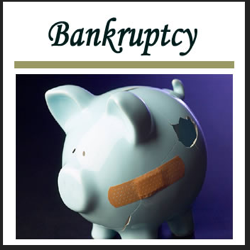Should I file Bankruptcy? If so which one?
If you are considering bankruptcy as an option, I highly advise you to remove the personal emotions and treat it as if you would a business decision. Interview attorneys and make sound decisions.
Sit down with a pen and a few pieces of paper. List your income as it stands RIGHT NOW at this moment in time. What you take home each and every month. Then list out all your bills, every last one of them you can possibly think of, including what you pay for food, clothing and utilities. Everything you spend money on. If you are among the millions of people who are right now borrowing from Peter to pay Paul, taking cash advances on your credit cards to pay other credit cards, or using credit cards to pay for food, then it is time to seek bankruptcy protection. Most likely a Chapter 7
If you have enough money left over for little things, but are living paycheck to paycheck, then you might consider bankruptcy, most likely a Chapter 13. Alternatives are to seek credit reduction services to reduce your payments to the bank, or directly work with your bank to reduce your payments. Be wary, any payments that are lower than what the bank considers their minimum payment, will be reflected as late on your credit report. Any agreement you get from the bank to reduce your payment arrangements, make sure they put in writing that with these modifications they will be considered a modification to your minimum monthly payment. You can read more credit repair tips by clicking on How do I fix my credit after this is done?
What is a Chapter 7 Bankruptcy filing?
Chapter 7, known as straight bankruptcy, involves liquidating all assets that are not exempt. Exempt property may include cars, work-related tools and basic household furnishings. Some property may be sold by a court-appointed official - a trustee - or turned over to creditors. Both types of bankruptcy may get rid of unsecured debts and stop foreclosures, repossessions, garnishments, utility shut-offs, and debt collection activities. Both also provide exemptions that allow you to keep certain assets, although exemption amounts vary.
Personal bankruptcy usually does not erase child support, alimony, fines, taxes, and some student loan obligations. Also, unless you have an acceptable plan to catch up on your debt under Chapter 13, bankruptcy usually does not allow you to keep property when your creditor has an unpaid mortgage or lien on it. See our section on I just need more time to get back on my feet, what do I do?
What is a Chapter 13 Bankruptcy filing?
A Chapter 13 filing may be the preferred method for consumers with assets they don’t want to lose, and willing to retire as much of their debts as possible, but under a less-pressured structure. Some debt balances may be partially discharged, and the filer agrees to a monthly payment to the trustee for distribution to the remaining creditors.
Any bankruptcy is a serious mark against your credit record, but Chapter 13 filings may be perceived as slightly less serious than Chapter 7 filings since you are exhibiting an interest in retiring your debts.
Chapter 13 bankruptcy allows you, if you have a regular income and limited debt, to keep property, such as a mortgaged house or car, that you otherwise might lose. In Chapter 13, the court approves a repayment plan that allows you to pay off a default during a period of 3 to 5 years, rather than surrender any property.
If you have a predatory loan, or a loan that you feel has TIL (Truth in Lending) violations, here is a reality check for you. These figures are from companies who research loans for these violations.
All loans prior to January 1st 2007
90%-99% of all Pay Option ARMs HAVE TIL (Truth In Lending) VIOLATIONS
80%-95% of all negative amortization loans HAVE TIL VIOLATIONS
60%-80% of all 3 year/5 year/7 year Fixed to ARMs HAVE TIL VIOLATIONS
30%-60% of all ARM loans HAVE TIL VIOLATIONS
0-10% of all Fixed loans HAVE TIL VIOLATIONS
Your attorney can determine these damages by doing a loan audit, either internally or through an Attorney Support service. The Judge is the one who will actually calculate these damages once it is presented in court. There have been successful cases where principle reduction has been allowed under certain circumstances.
There are other Bankruptcy filings you will see, like Chapter 11 or Chapter 20. These are more complex bankruptcies, usually for higher dollar values or bankruptcy conversions to other types of bankruptcies. For example, if you have filed a chapter 7 you can later file a chapter 13. This is what is referred to as a Chapter 20. Make sure you talk to several attorneys and choose the one you feel more comfortable with.
http://www.citylegalguide.com/ is a great web site that can guide you to specific bankruptcy information within your state. 

